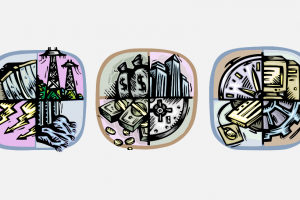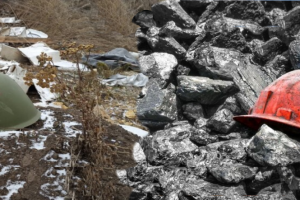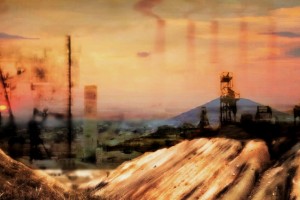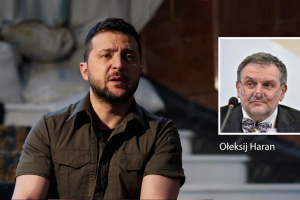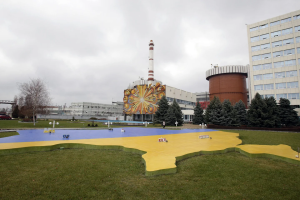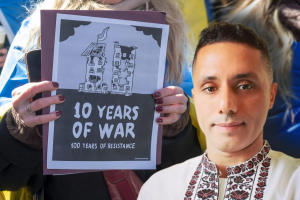The Nation Puzzle
The degree of Ukrainian resistance surprised many, except maybe for the Ukrainians themselves. The determined reaction to the Russian invasion became the next logical step, the last piece of the puzzle that completed the modern Ukrainian political nation. But what of the other pieces? When, why, and how did the external analysis miss the obvious? This has been a recurring question over the past few weeks and I will try to do it justice.
Let us go back as far as 'glasnost', the Gorbachev era informal Soviet policy of increased transparency among the party cadre and the public. The idea was to reduce corruption, to somehow circumvent the inbreeding of the political elites that were caught up in a vicious cycle of propaganda. The move, as we know, came way too late to preserve the empire. Instead, the immediate effects turned the controlled and measured stream of information into an unbridled deluge of the subconscious.
Fearful of future retaliation, caught in a cycle of thaws and repressions, people avoided politics and instead turned their attention to topics such as freedom of religion, beliefs, and popular culture from abroad. 'Glasnost' also gave voice to various malformed conspiracy theories that bloomed among the inexperienced. Only with the passage of time and the relative moderation demonstrated by the Soviet government did newly-created public organisations start looking into the dark corners of the past.
In Ukraine specifically, the policy shift was met with even more apprehension. The repressed past that included genocidal famines and deportations had long been drowned in blood, and overcoming dread is a painstaking process. But it was here that ‘glasnost’ really started something – an avalanche.
At first, and only after gaining its Independence, serious efforts to revisit historical dogmas were attempted, and not without outside resistance or self-censorship. Freedom was still thought to be a fairy tale, and who knew for how long this lull would last?
A big shift happened in the year 2000 with Georgiy Gongadze, a prominent journalist killed by security personnel close to the then-president Kuchma. The society that had only started recovering from years and years of fear-induced docility and bereft of prudent political elites received a reminder of the old days. The resulting protests did not achieve immediate justice but made a dent in the persisting mythos of the invulnerability of the establishment. A simple incessant thought was planted – citizens should not fear those whom they brought into the office.
Both uprisings in 2004 and 2013 that happened on Maidan only reinforced the idea that it was the people who were in control. There was no going back from this. If the Orange Revolution confirmed the growing suspicion that the people could actually shape their country, the events of winter 2013-2014 made the people face the beast.
It was not until the violence broke out that the Euromaidan turned into the Revolution of Dignity, a tide that swept the entire country and united, albeit briefly, people from all walks of life against autocracy. The outtake for Ukrainians was that those with power not only can be challenged but successfully defeated despite their appearance. The sanctity of life had also been established – those who died determined the vision of a future where no amount of armed opposition could strangle freedom. This experience perhaps explains why Ukrainian civilians are not afraid to go barehanded against the Russian tanks. And should I remind you that confidence is contagious?
The annexation of Crimea and the subsequent clandestine invasion of Donbas by Russia proved to be yet another revelation – life, and not the mere permission for existence given by the one in charge, has to be protected with arms. After that, it was either do or die.
The Army which had been long considered a place little better than prison as far as social mobility went was jolted back to life. The gestalt consciousness of the Maidan that was due for hibernation changed gears and was brought into overdrive. Once again the volunteers – students, plumbers, cooks, and business people in their daily life – came not only to join and learn from scratch about warfare but to fill the ample supply gaps left by corrupt leadership.
We have matured quickly. Not without glaring issues left to be resolved in the future, the state was entirely transformed in just under eight years. Public accountability for any government action or misstep is now a given and to challenge this feature is political suicide.
Meanwhile, the Army became by far the most trusted institution and a strong link was forged with the common people. So when in the early morning of February 24, 2022, the Russian military yet again breached Ukraine's sovereign border, the question most Ukrainians posed was not "What is there left to protect?" but "How can I be of help?" With the force of missile impacts affecting everyone in their dwellings, Putin's Russia took a step too far.
In small steps, recent history has taught Ukrainians not only the meaning of their plight but the ways how they can act. Inadvertently, Putin carefully helped to form a skillset. For more than a month now, no matter their mother tongue or ethnicity, people who have protested in Maidans all over the country, and those who had mixed feelings about their results, people who have fought in Donbas, and those who were displaced by Russia's actions have worked in sync. Causes that united only distinct stratum have merged into one – self-preservation.
Russian state rhetoric has also helped in setting a peaceful nation on a warpath to a degree that some already call Ukrainians bedevilled. With all the clandestine efforts that the Russian Empire and then the Soviet Union have taken to muddle and ultimately destroy Ukrainian identity, nobody ever openly and on such a level claimed that Ukraine was a lie. Such wording poses an existential threat, a challenge.
Imagine now that what our ancestors have left us was the foundation found below the bones and rubble. The death of the journalist has triggered spring cleaning and the first Maidan was the first building block. With the deaths on Institutska Street in 2014, the first floors were added and the War in Donbas has only accelerated the construction. With this invasion, we clearly realised where those bones we found had come from and we are not about to repeat that journey.
What happened on the outskirts of Kyiv is not just an echo of the past, but a precursor to what we may find next. Our job is to continue building, to make Ukraine into a fortress, to stop this calculated madness from ever taking place again.


